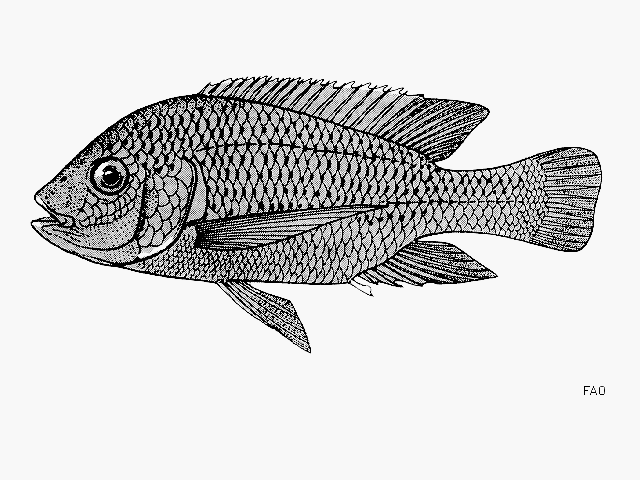| Cichlidae (Cichlids), subfamily: Pseudocrenilabrinae |
| 36 cm SL (male/unsexed) |
|
benthopelagic; freshwater |
| Africa: Endemic to Lake Malawi. |
|
Dorsal spines (total): 15-17; Dorsal soft rays (total): 10-11; Anal spines: 3-3; Anal soft rays: 8-10; Vertebrae: 30-32. Breeding males black, in some with white or yellowish dorsal lappets. Testes broad, white and sinuous when fully ripe. Lower pharyngeal toothed area with concave sides; median length of bone 1.2-1.3 times its width and 35.5-39.2 % length of head; blade 1.3-2.1 times median length of toothed area. Caudal fin scaly. |
| Occurs at a temperature range of 21.5-29.0 °C (Ref. 2). Inhabits very shallow and vegetated regions. Feeds on diatoms and debris collected from the bottom and from between vegetation (Ref. 5595). |
|
Not Evaluated (N.E.) Ref. (130435)
|
| harmless |
Source and more info: www.fishbase.org. For personal, classroom, and other internal use only. Not for publication.

